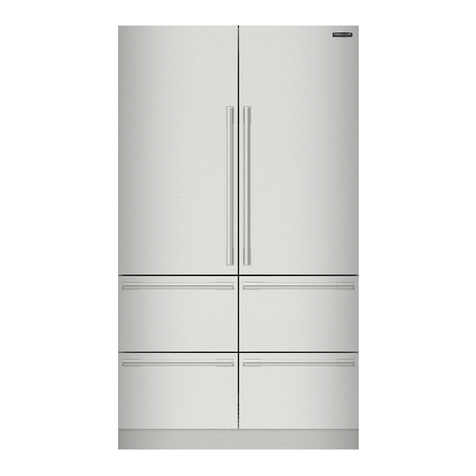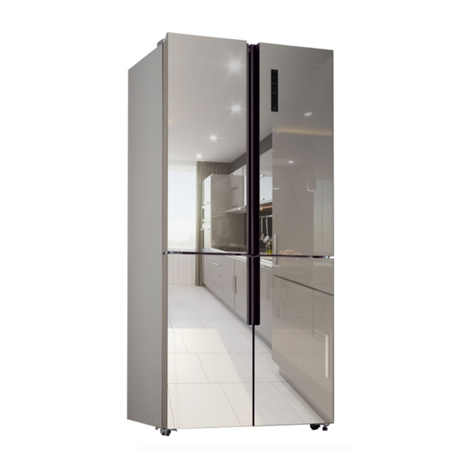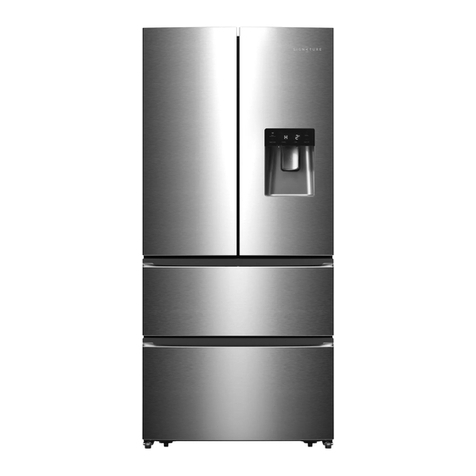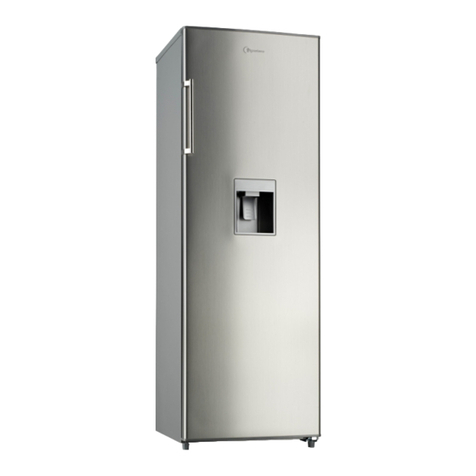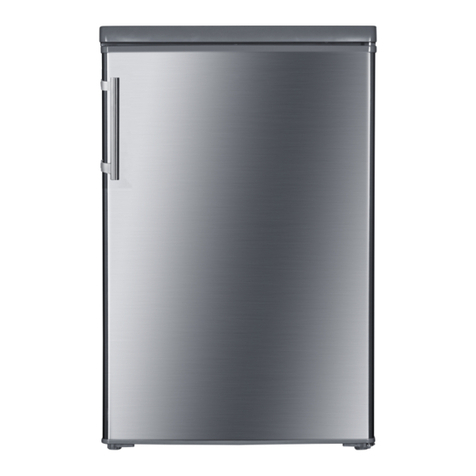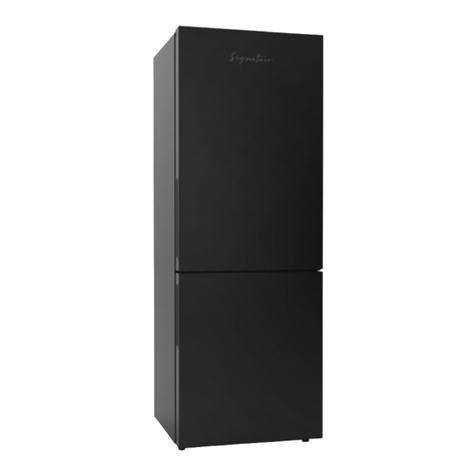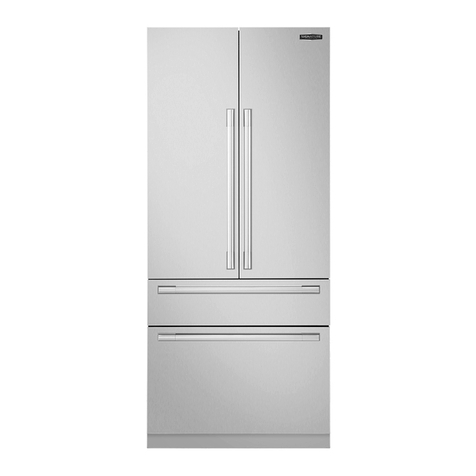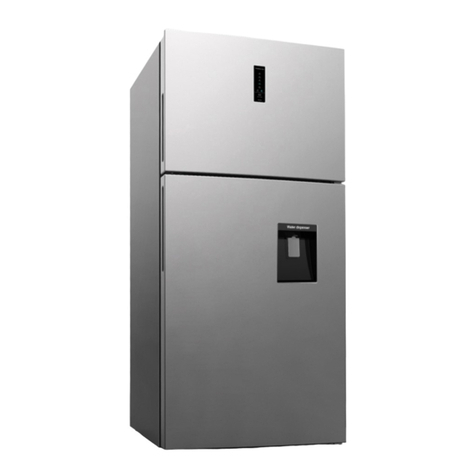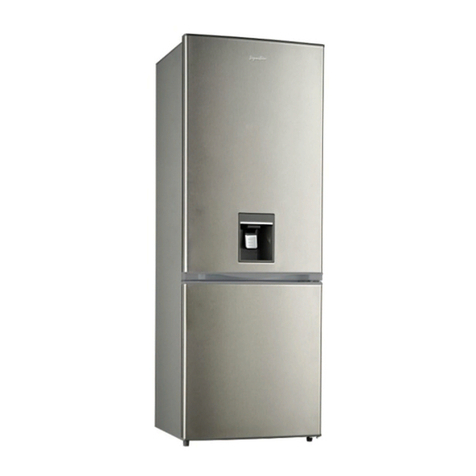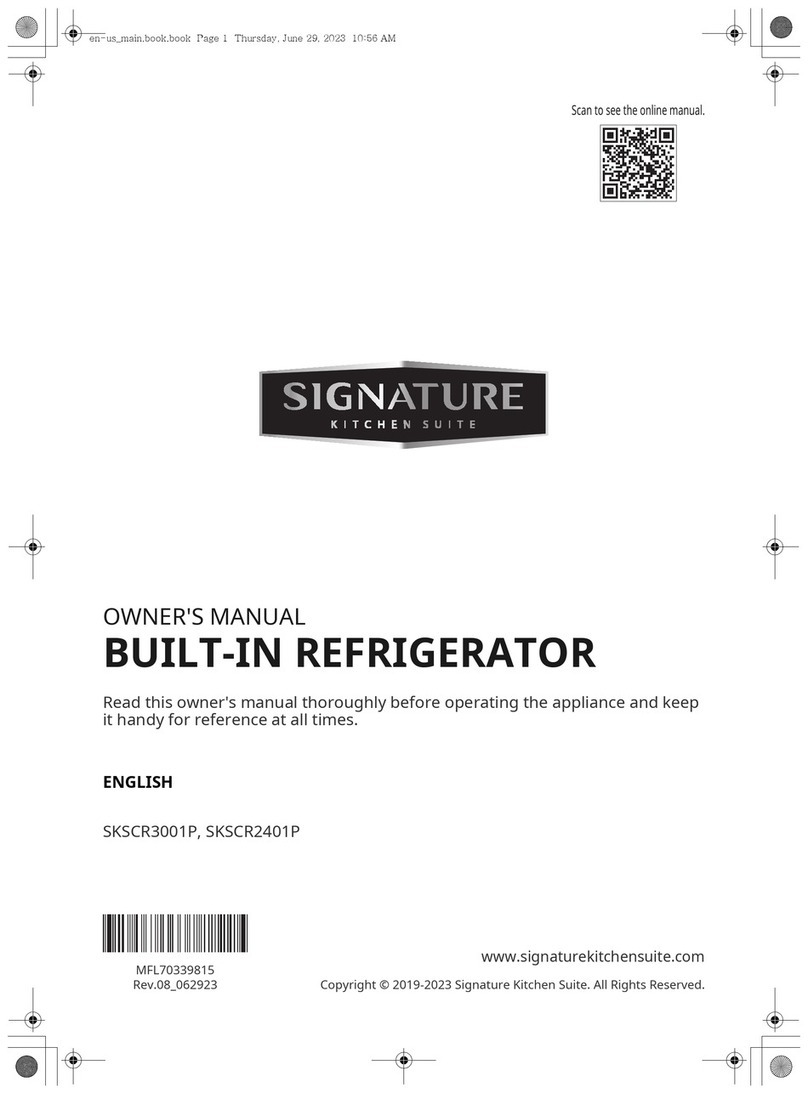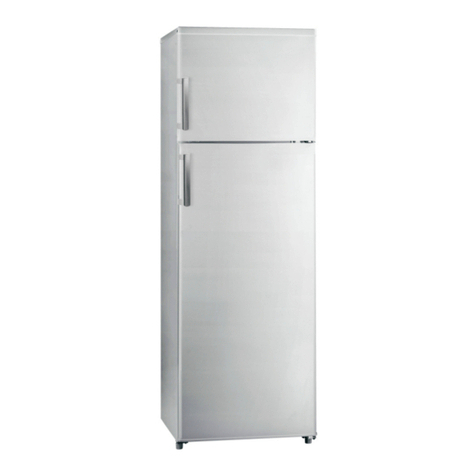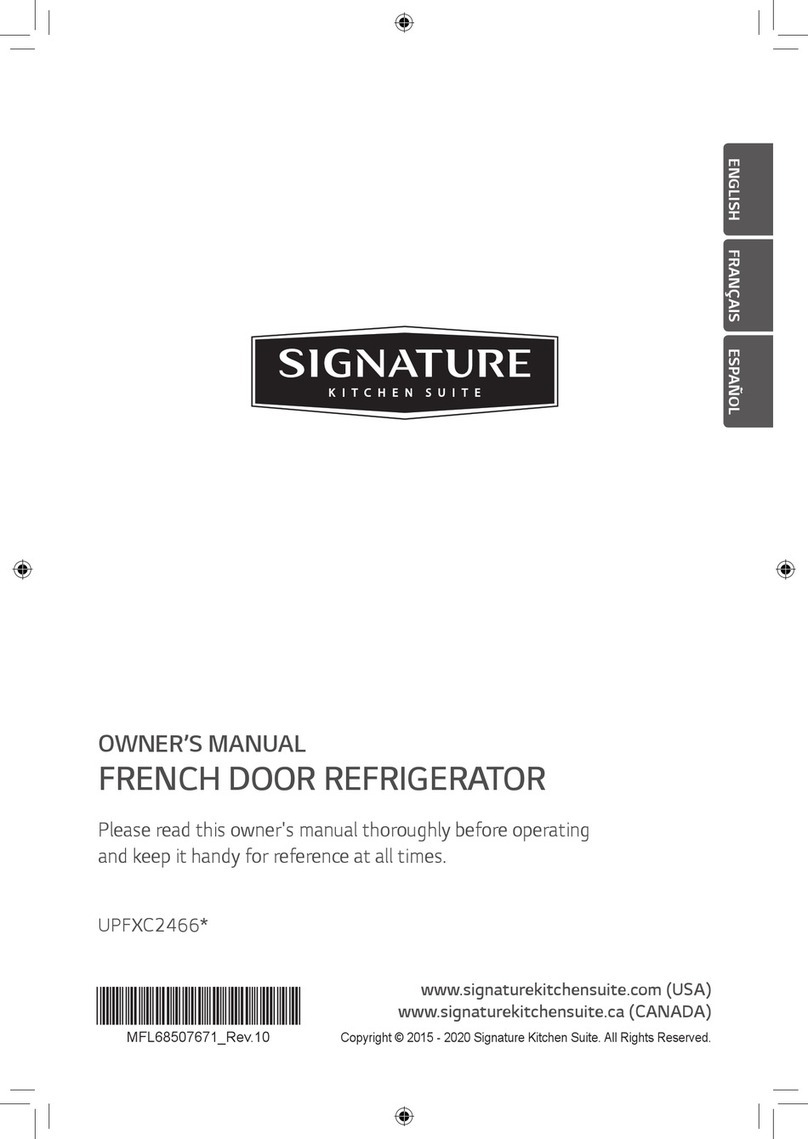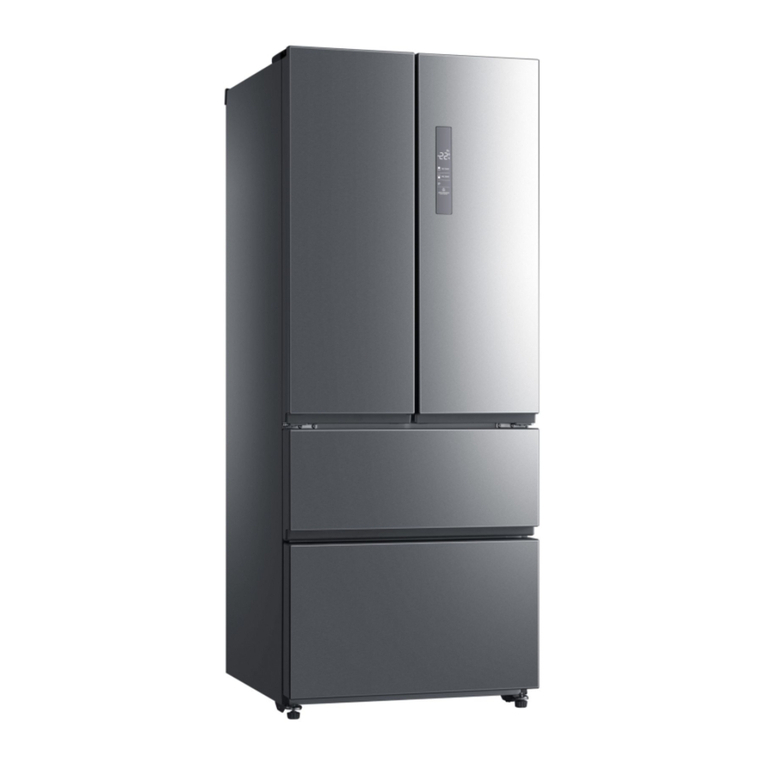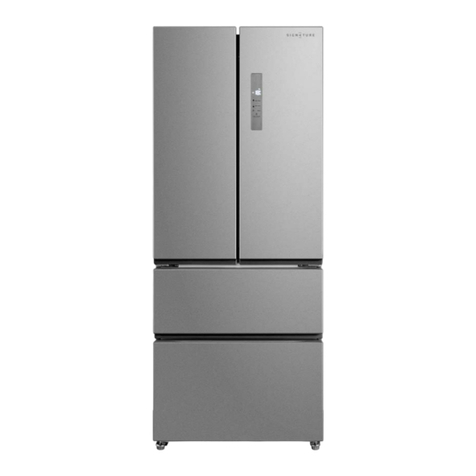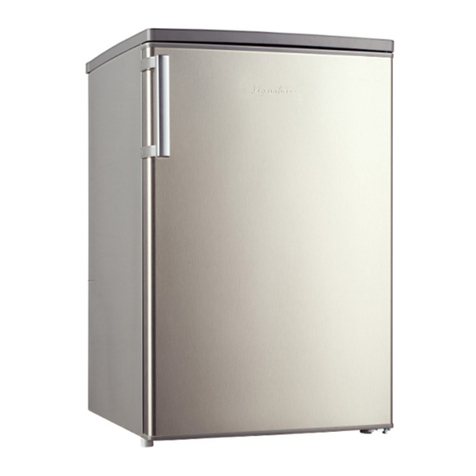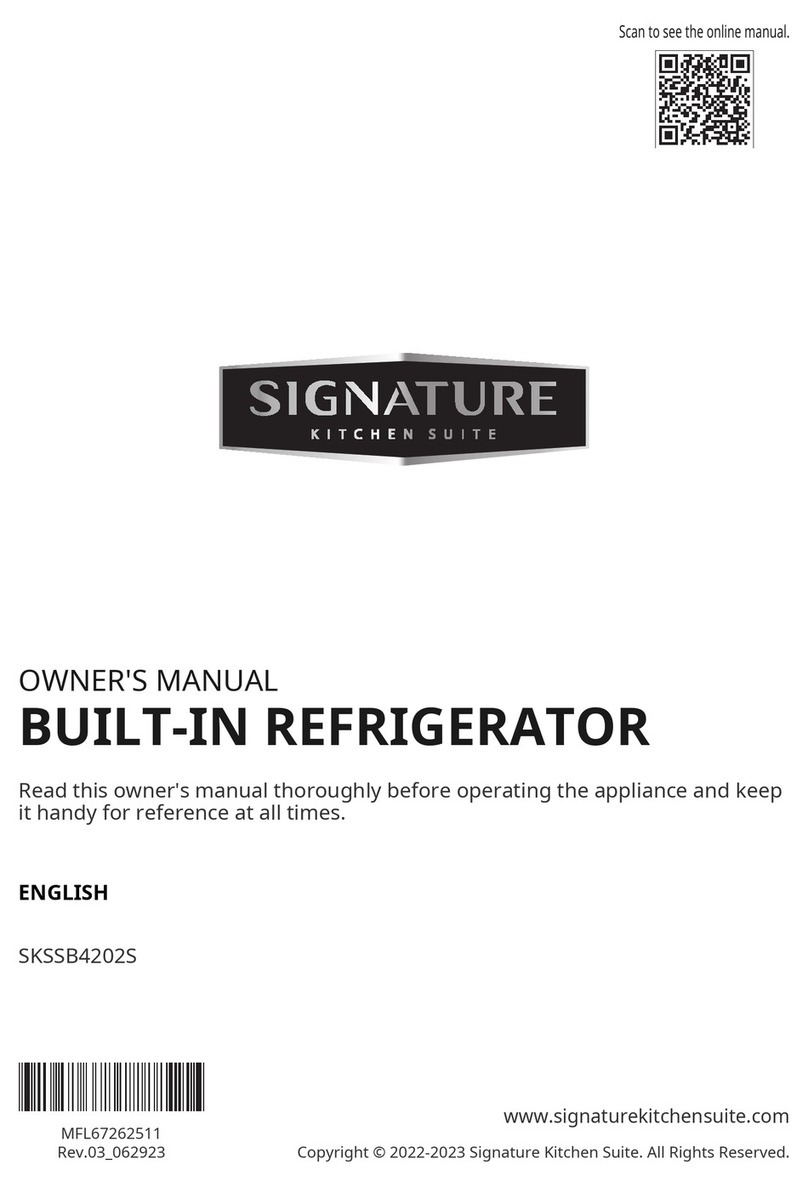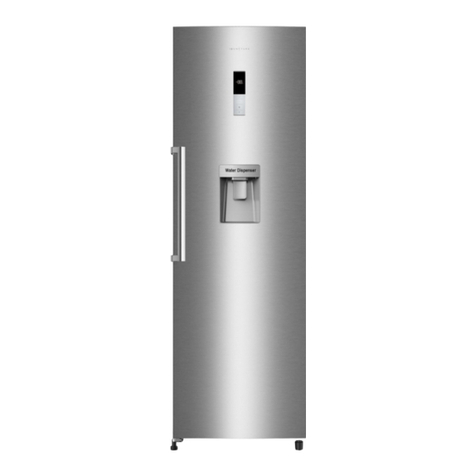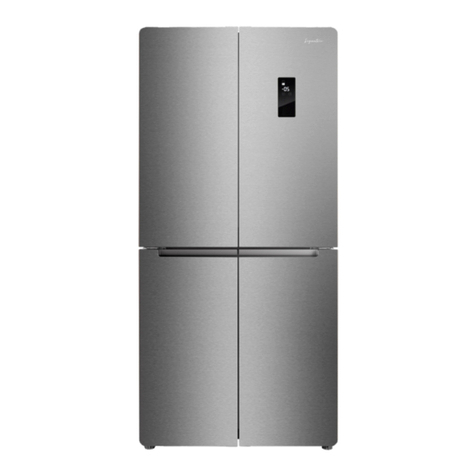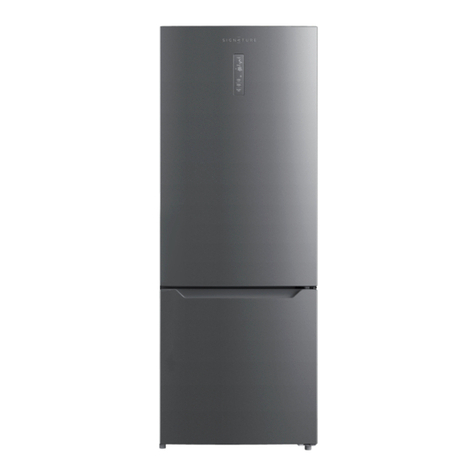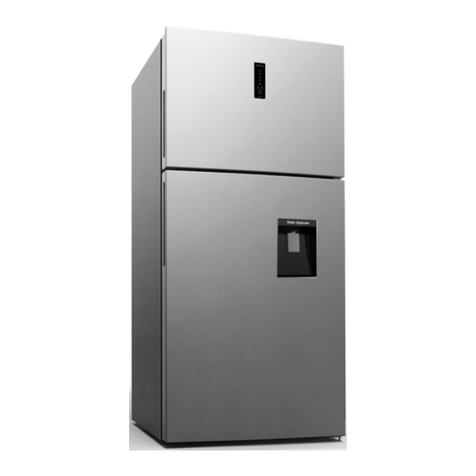
7
USING YOUR APPLIANCE
The appliance features internal controls.
• Allow the appliance to stand upright for
a minimum of 4 hours before you switch
it on.
• Plug in the appliance and switch on at the
mains supply.
• Set the thermostat control to the required
setting as detailed in the Temperature
Control section
• Leave the appliance for approximately 4
hours for the correct temperature to be
reached.
• Plug in the appliance.
• When the appliance is connected to the
mains, the inside light switches on each
time the door is opened. The thermostat
is located inside the refrigerator
compartment, is used to adjust the
temperature of refrigerator compartment.
TEMPERATURE ADJUSTMENT
• The thermostat control is situated in the
fridge compartment.
• Regulate the thermostat to Level 3 to
check on the operation before switching
to higher cooling level.
NOTE: The optimum cooling level is Level
3 (to avoid over cooling and damaged to the
compressor).
• Check the temperature after 4 hours. If
the cooling has reached to acceptable
level, you may start using the appliance.
• When the thermostat is set to position 0, it
will be turned o.
• To store food for a short period, set the
thermostat in the range of 1 (min) to 3
(Med).
• To store food for a long period, set the
thermostat in the range of 3 (Med) to 5
(Coldest).
NOTE: The ambient air temperature, frequency
of door opening and the position of the
appliance can eect internal temperatures.
These factors must be taken into account
when setting the thermostat.
ARRANGING AND STORING FOOD IN THE
FRIDGE SECTION
• Warm food or evaporating liquids should
not be stored in your refrigerator, as this
will increase the humidity inside of the
appliance.
• All foods should be covered or wrapped,
this is particularly important if the food has
a strong avour. You should use polythene
bags or sheets, aluminium foil, wax-paper.
Liquids should be stored in covered
containers or bottles.
• To maximise the space inside the fridge
section, any excessive packing on the
food should be removed.
• Quickly perishable food should be stored
at the back of the refrigerator, which is the
coldest part of the appliance.
• No food items should be allowed to come
into contact with the back wall of the
refrigerator.
• Make sure that you arrange food in such
a way that the door can close completely.
Particular attention should be given to
bottles that may protrude when placed
on shelves inside the main section of the
refrigerator.
• Some organic solutions, such as the oils
in lemons,orange peel and acid in butter,
can cause damage to the plastic parts
contained inside of the refrigerator.
• Do not open the refrigerator door too
often or leave the door open or long
periods of time, as this will increase the
temperature inside of the appliance.
• Meat should be wrapped in polythene
bags and then placed on the glass shelf
above the salad drawers.
• Meat should only be stored in this manner
for one or two days at most.
• Cold dishes/cooked food should be
covered and be placed on any shelf.
• Fruit and vegetables should be cleaned
thoroughly and placed in the salad drawer.
• Cheese and butter should be placed in air
tight containers, or they can be wrapped
in aluminium foil or polythene bags. As
much air as possible should be removed
from the bags.


